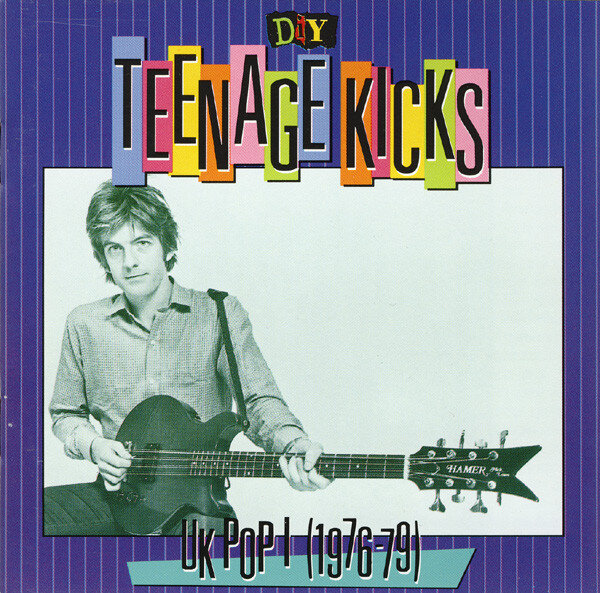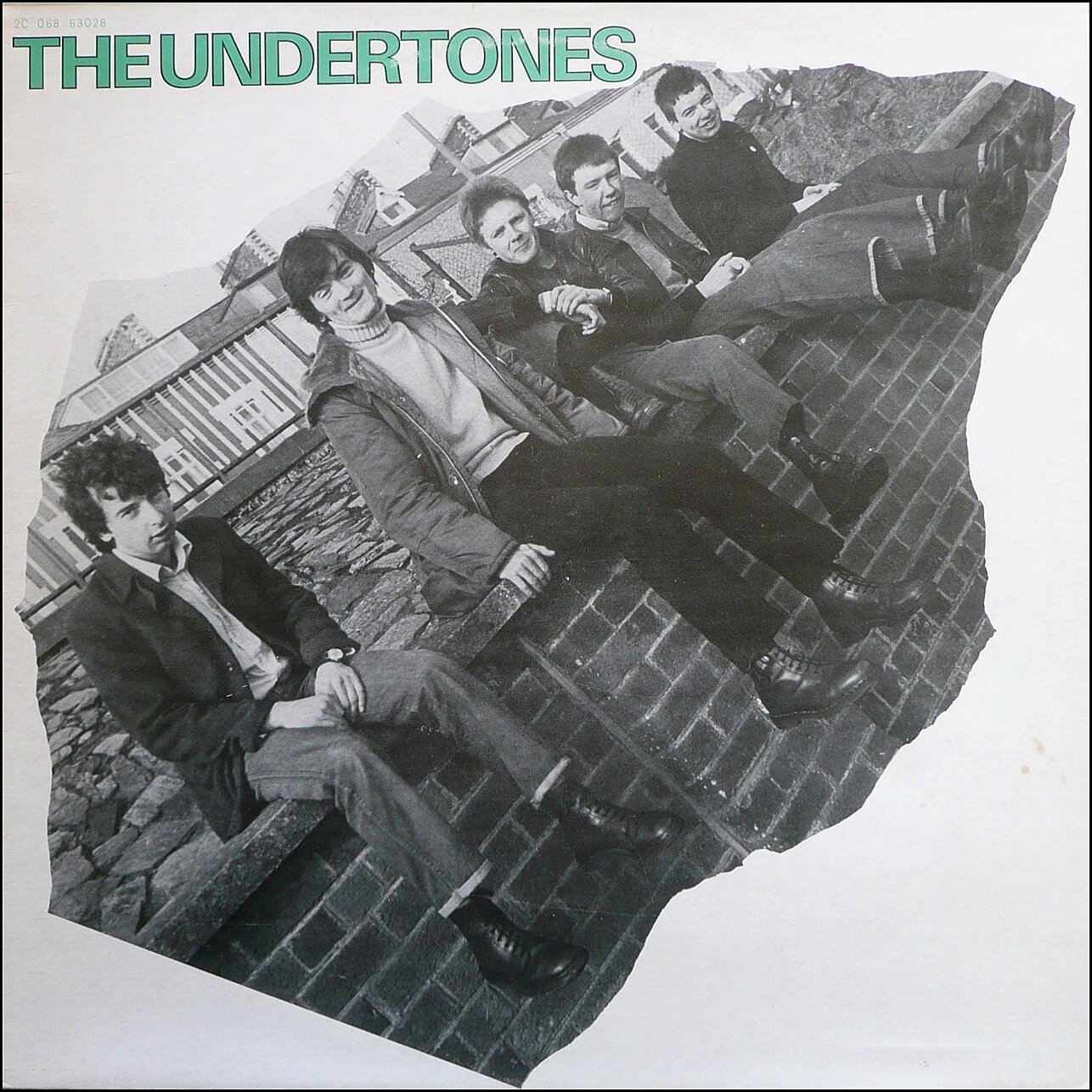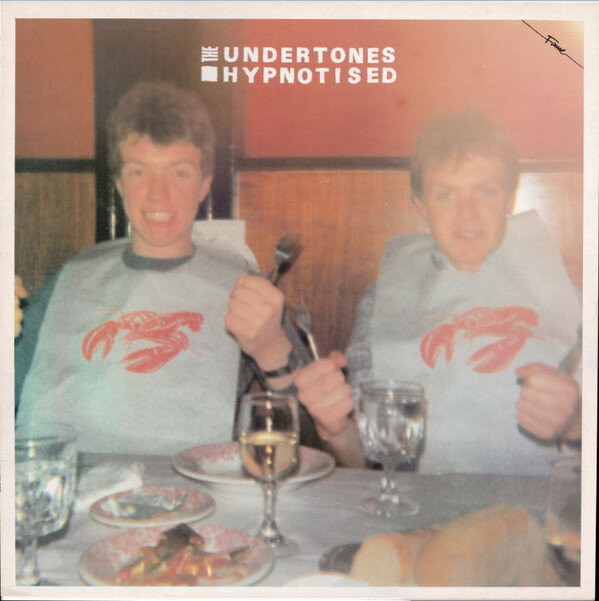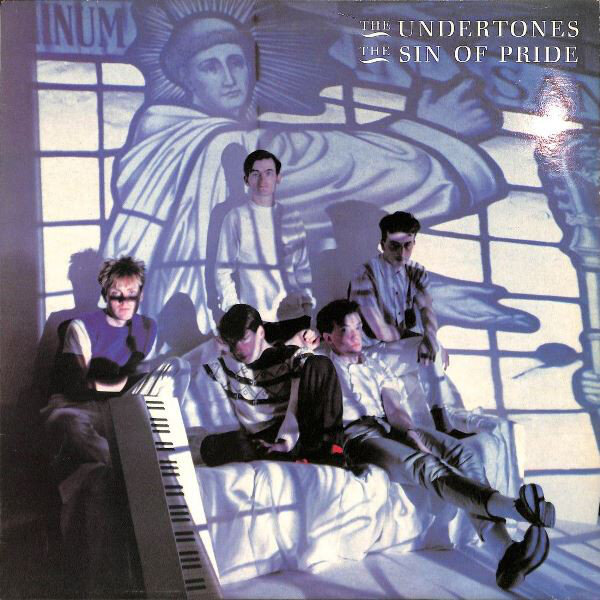Positive Touch: A Retrospective of The Undertones
Click below on the streaming service of your choice to listen to the playlist as you read along.
In the early 1990s I obtained a series of CDs issued by Rhino Records chronicling the various late ‘70s and early ‘80s modern rock scenes. The series was titled, D.I.Y., and they were a marvelous history lesson that exposed me to a wide range of artists I’d missed from the era. One CD was titled, Teenage Kicks: UK Pop (1976-1979), and the song the CD was named after was by a band called The Undertones. I just loved the song and it was added to many a mixtape over the ensuing years.
The DIY disc that introduced me to The Undertones
I recognized the band’s vocal and learned it was Feargal Sharkey, a name that’s hard to forget, but which I knew due to a pair of tunes. The first was a slow, electro-pop song from the Vince Clarke act, The Assembly, in which Feargal sang on their 1983 single, “Never Never.” The second was his massive pop hit from 1985, “A Good Heart.” So, until 1993 I had no idea The Undertones existed or that Feargal Sharkey came from that band. Over the last ten years I’ve had the chance to go back and catch up on The Undertones and wow, I really missed out.
Well, not so much in the UK and their native Northern Ireland. The Undertones released four LPs between 1979 and 1983, with three cracking the top twenty in the UK and the fourth just coming shy of the top forty. They had seven singles crack the top forty with a seventh reaching #41, and of those, four reached the top twenty. As chronicled in the profiles on the modern rock builders and the years of 1976 and 1977, the modern rock era was built on pub rock and power pop, which begat punk and a more muscular approach to the rock ‘n’ roll formula of the late ‘50s and early ‘60s. Few mined that vein more than The Undertones, churning out album after album of powerful, short, guitar-driven pop songs filled with hooks and toe-tapping energy. Their sound was like a mix of The Saints and The Ramones.
The Undertones at The Marquis Club in London, 1979
The band started to come together in Derry, Northern Ireland in 1975 around brothers John and Vincent O’Neill. After playing at home for a couple years Vincent left to be replaced by younger brother Damian. With the O’Neills on guitar, Feargal Sharkey on vocals, Billy Doherty on drums and Michael Bradley on bass, the band started to play gigs around Derry in 1976, finally settling on the name The Undertones and shifting their ‘60s pop sound into a rougher and tougher version inspired by the punk sounds making its way across the Irish Sea. However, while living in the midst of The Troubles, they took a less political route, opting for old-time hooks paired with a modern energy. Over 1977 and 1978 they played regularly at a Derry club, The Casbah, building their sound and original material, eventually shopping a demo around to labels and BBC DJ, John Peel, who invited them to record a 4-song EP, Teenage Kicks, which was released via a Belfast indie label in September ‘78. After hearing the title track on Peel’s radio show, Sire Records head honcho Seymour Stein came looking for them and by October they were signed, with the EP given re-release and the band appearing on Top of the Pops by the end of the month. After percolating in Derry for years, the band was suddenly thrust into the limelight of the UK music scene.
The Undertones (L to R): Billy Doherty, Mickey Bradley, Damian O’Neill, Feargal Sharkey, and John O’Neill
“Teenage Kicks” reached #31 on the UK singles chart and has become an iconic song of the early modern rock era. It had an uncanny tempo, seeming fast and slow simultaneously, with a simple structure underpinning classic ‘50s era pop sensibility. Even for fans that didn’t like punk, there was a relatable, rock ‘n’ roll vibe to it with an edgy, fun, rebellious spirit. It was a paean to the romantic dreams and yearnings of youth.
Their whirlwind attack on the music world continued with tours, a fantastic single, “Get Over You,” in February ’79, followed by their debut, self-titled LP in May. Aside from being a tidy, punky, power-pop package of fourteen songs over just less than thirty minutes, it also spawned a top twenty single in “Jimmy Jimmy” and a top forty entry with “Here Comes the Summer.” The band followed with two more albums, each about one year after the next, Hypnotised and Positive Touch. The second album stayed in close proximity sonically to the first and was an even better collection of songs, while the third, shifting to label EMI, showed an evolution with greater range of tempos, sounds (horns), and nuances while still delivering the energy and fun of their core vibe. From those albums they achieved their only top ten single, “My Perfect Cousin,” along with two top twenty entries, “Wednesday Week” and “It’s Going to Happen!”
The fourth and final single from Positive Touch, “Julie Ocean,” just failed to crack the top forty, ending a run of six consecutive singles to cross that threshold. A non-album single, “Beautiful Friend,” their only release of 1982, failed to chart, making it their first release to have that happen.
Over 1982 the band showed signs of exhaustion, frustration, and increasing strife between singer Sharkey and the band’s primary song writer, John O’Neill. They shifted into a new musical style, leaning into the soul and Motown sounds that had inspired legions of UK artists. The first release to explore this sound, although tentatively, was the single “The Love Parade,” released in the fall of ’82. Their energy and tightness was replaced with an expansive sound, backing singers, and piano accents. The single barely cracked the top 100 on the UK singles chart. The next single, “Got to Have You Back,” released along with the LP, The Sin of Pride, in the spring of ’83, barely did better, teeing up the LP to be the first to miss the top forty on the album chart. It was a shame since, despite the shift in style, there was still a strong batch of songs on it, with the highlights being the slower tracks like “Love Before Romance” and “Soul Seven.”
Vexed at the loss of success combined with the infighting, Feargal announced his intention to leave and the band decided to break up, holding together long enough to complete their final tour. Sharkey, as noted, had a briefly popular solo career, while the O’Neill brothers went on to form the band, That Petrol Emotion. The Undertones reformed in 1999 with Paul McLoone on vocals when Sharkey declined to participate. The new line-up has since released two albums in 2003 and 2007 which are not very good. One thing the band always had to set them apart from the many that plied the power-pop style was Feargal’s distinctive, tremulous voice. McLoore’s voice was as standard issue as they came, and the music fell flat without the vocal personality out front to give it life. Curiously, some of the better tracks from those LPs resemble Canada’s The Tragically Hip.
The Undertones never got much attention outside of the UK, aside from some likely play on college and underground radio stations. They toured Europe regularly and did tour North America in 1979 (as an opener for The Clash) and 1980 but failed to generate any chart attention or excitement. Even my local alternative radio station, CFNY, didn’t chart any of their songs or albums during their heyday – though “Never Never” was a song that helped endear me to the station after I discovered it, at least bringing Feargal Sharkey to my attention. They likely just missed the zeitgeist of the punk and power-pop scenes of ’77 and ’78, running against the tides of ska, new wave, R&B, disco, and post-punk that arose over ’79 and the early ‘80s. And while “Teenage Kicks” continues to keep them on the lists of great songs from the era, The Undertones were so much more and deserve to be fully explored. I overlooked them, and hope to help others not make the same mistake.
The Playlist - song \ album (year)
Teenage Kicks \ Teenage Kicks EP (1978)
Get Over You \ non-album single (1979)
Really Really \ B-side to “Get Over You” (1979)
Girls Don’t Like It \ The Undertones (1979)
Here Comes the Summer \ The Undertones (1979)
True Confessions \ The Undertones (1979)
I Know A Girl \ The Undertones (1979)
You’ve Got My Number (Why Don’t You Use It!) \ non-album single (1979)
The Way Girls Talk \ Hypnotised (1980)
My Perfect Cousin \ Hypnotised (1980)
Tearproof \ Hypnotised (1980)
Wednesday Week \ Hypnotised (1980)
Nine Times Out of Ten \ Hypnotised (1980)
Julie Ocean \ Positive Touch (1981)
Crisis of Mine \ Positive Touch (1981)
You’re Welcome \ Positive Touch (1981)
It’s Going to Happen! \ Positive Touch (1981)
Sigh and Explode \ Positive Touch (1981)
Beautiful Friend \ non-album single (1982)
Luxury \ The Sin of Pride (1983)
Love Before Romance \ The Sin of Pride (1983)
Soul Seven \ The Sin of Pride (1983)
The Love Parade \ The Sin of Pride (1983)















